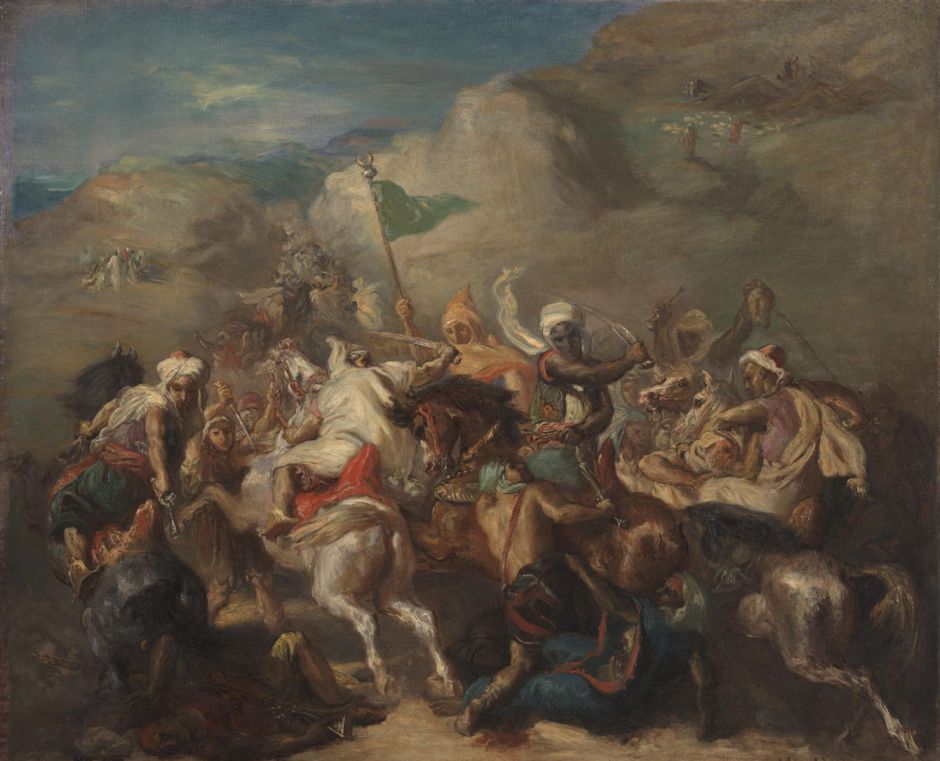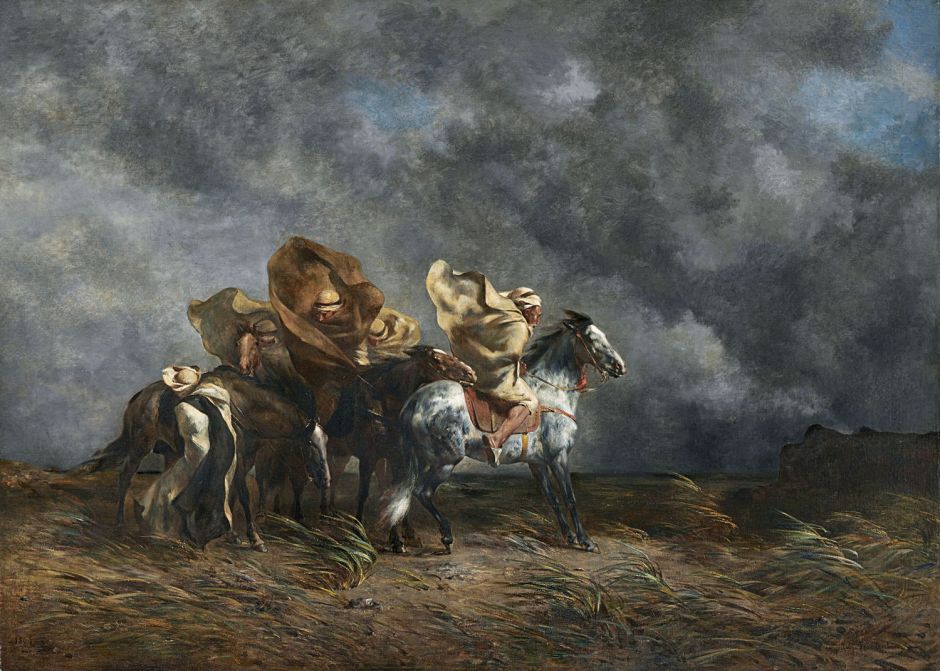There are still a couple of weeks to go before the start of Spring, so to cheer us up at the back end of winter, this weekend we’re in Algeria. This article shows a selection of paintings of the recent history of the country, some places and scenes. Tomorrow’s sequel concentrates on the people, in particular the Ouled Naïl from the south of Algeria.
Algeria had remained independent until it was invaded by the French in 1830. As a colony, it started to become a popular place for artists to visit, as it was progressively ‘civilised’ by the colonial power.

Horace Vernet was part of the French campaign in Algeria, and was engaged in the Constantine Expedition of 1837. This painting shows the disorderly struggle of the troops as they fought their way to the top, in the final assault on this city on 13 October. General Valée, in command, was made a Marshal of France on 11 November, and Governor General of Algeria on 1 December.
In 1846, Théodore Chassériau travelled to Algeria, where he too spent much of his time in and around Constantine, in the north-east of the country, making copious sketches and drawings. On his return, he then worked those up into finished oil paintings that are among some of the finest of the Orientalist works of the day.

This imposing equestrian portrait of The Caliph of Constantine Ali Ben Hamet, Chief of the Haractas, Followed by His Escort is claimed to have been exhibited at the Salon in 1845, although it wasn’t until the following year that Chassériau arrived in Algeria.

Chassériau appears to have been particularly productive and successful in 1849, when he painted this quite sketchy portrait of two Moorish Dancers, much in the style of Delacroix.

Woman and Little Girl of Constantine with a Gazelle (1849) is a painterly work derived from these visits, apparently based on sketches of scenes in the city of Constantine.

Scene in the Jewish Quarter of Constantine (1851) shows a mother and, presumably, her mother with an infant in an ingenious rocking cradle. Constantine is now the third largest city in Algeria, and has long had a substantial Jewish population.

In 1854, Chassériau returned to his north African theme with this vivacious painting of a Battle of Arab Horsemen Around a Standard. This shows the influence of Delacroix, and despite its wonderful painterly style, contains numerous details, such as the brandishing of a severed head, by one of the horsemen at the rear, mid-right.

Chassériau’s contemporary Eugène Fromentin was another pioneering French artist to travel and paint in Algeria. Windstorm on the Esparto Plains of the Sahara from 1864 is one of the later examples of his work from North Africa, and helped establish the vogue for Orientalism. These five riders are seen in the Khamsin or Simoun desert wind near Laghouat on the fringe of the Sahara. This was the great success of the Salon in 1864.
With his portraiture work bringing in a steady income, in 1881 Pierre-Auguste Renoir could at last afford to travel. Instead of going to London as other Impressionists did, in March and April he visited Algeria with Paul-Auguste Lhote.

The Mosque, also known as Arab Festival, from 1881, shows some sort of public performance taking place on the ruins of the old ramparts of the city of Algiers. There are musicians, dancers, and a large group of spectators. It has clear influence from the Orientalist paintings of Delacroix, but is perhaps best seen as one of the rare examples of Impressionist Orientalism. Renoir’s small strokes of bright colour and energetic work with the palette knife give it a strong feeling of movement, and it so impressed Claude Monet that he bought it from Durand-Ruel in 1900.

Field of Banana Trees is another unusual work painted by Renoir during his visit. He may not have realised it at the time, but this grove of banana palms is extremely atypical of North Africa, although it gave him a wonderful opportunity to assemble brushstrokes to form its vegetation. When exhibited later in Paris, Manet himself praised the painting.

In 1894, Georges Rochegrosse travelled to Algeria for the first time, and was smitten by Orientalism. This provoked a series of paintings in which narrative took a back seat to the exotic. His Palace Entertainment is a spectacular painting which could easily be mistaken as the work of Jean-Léon Gérôme, although by this time Rochegrosse was often more painterly in style. It shows a dancer with musical group entertaining some Algerian men, her dance involving a pair of short swords.
Tomorrow we’ll meet more of the local population.

